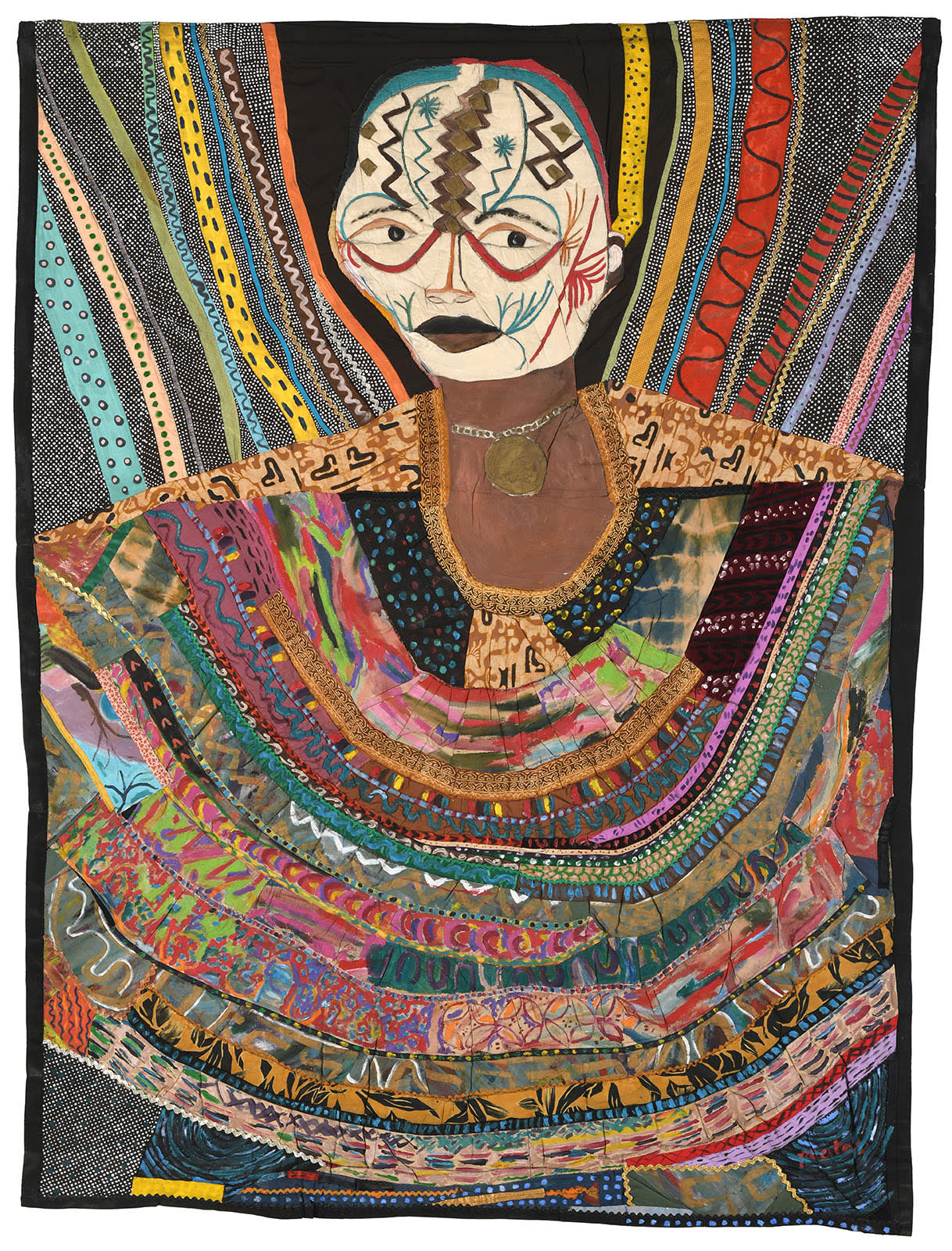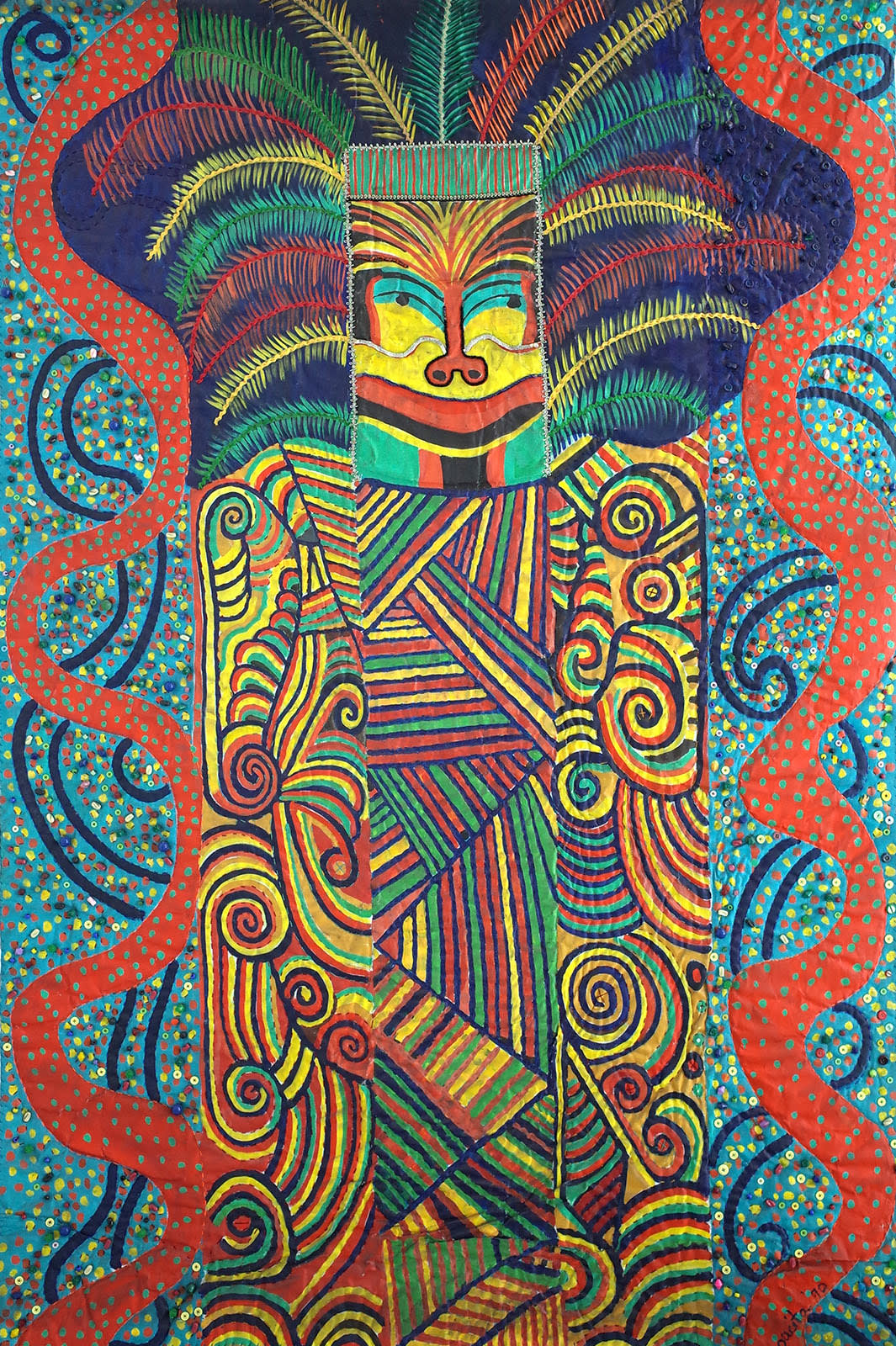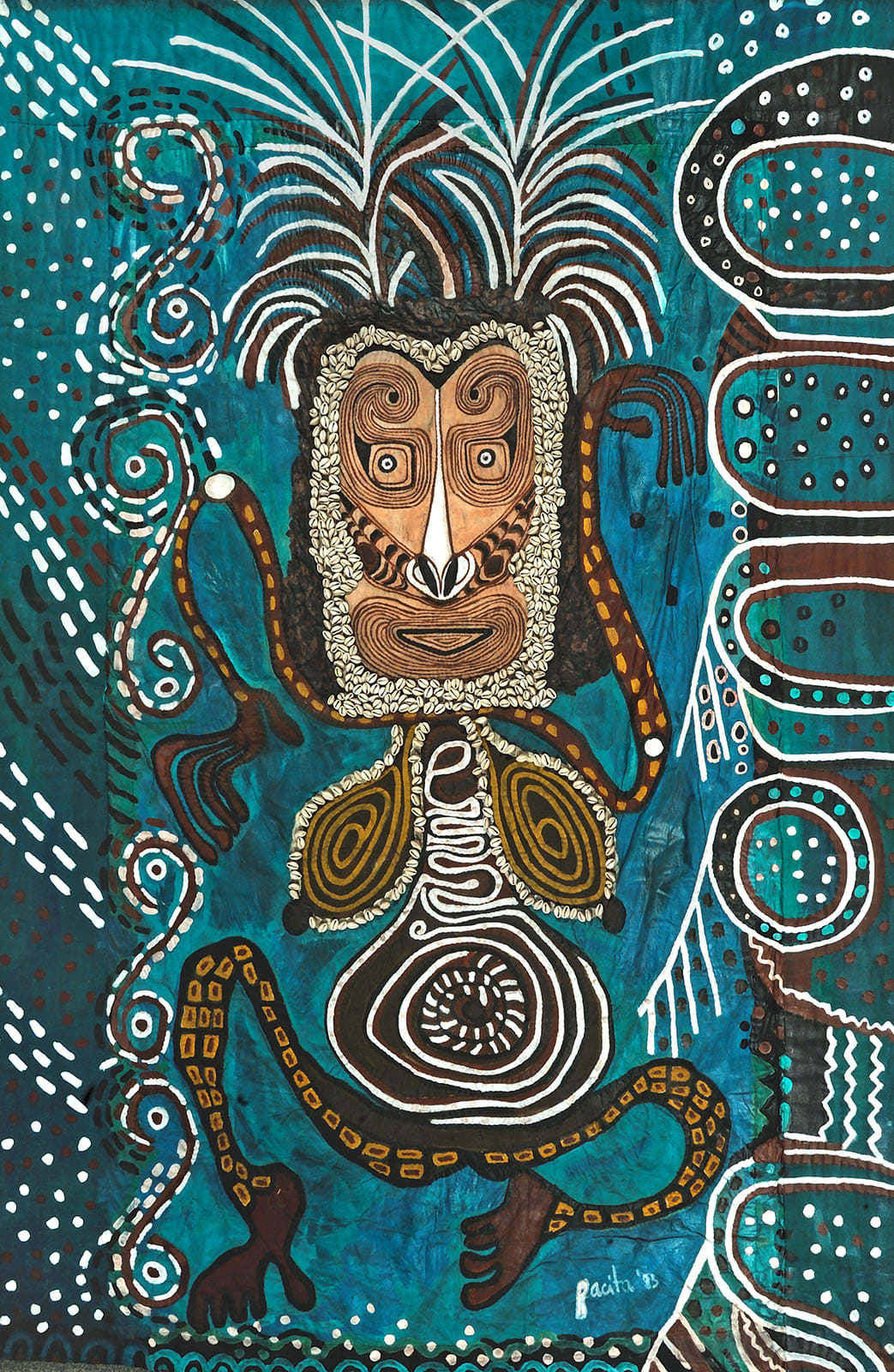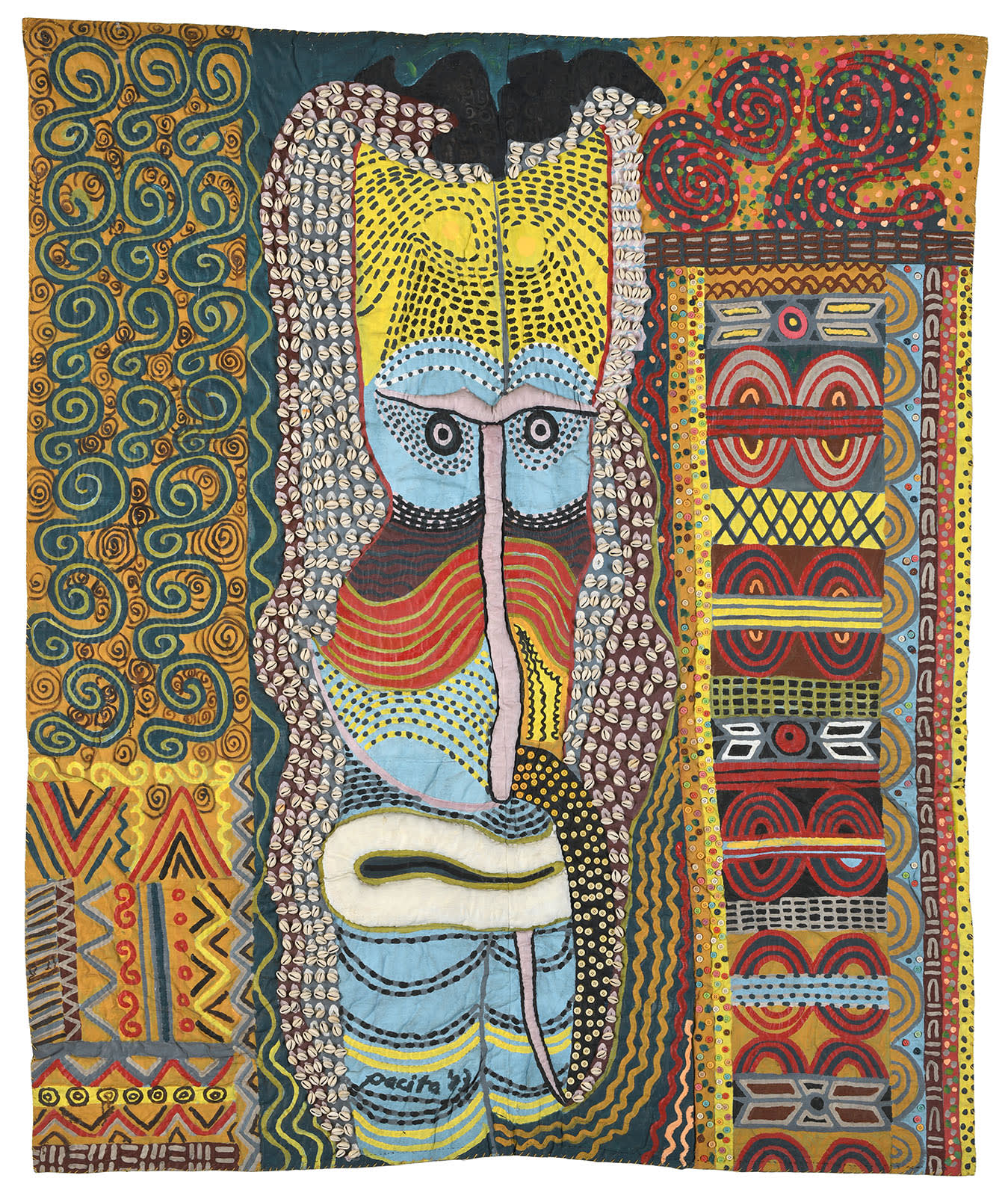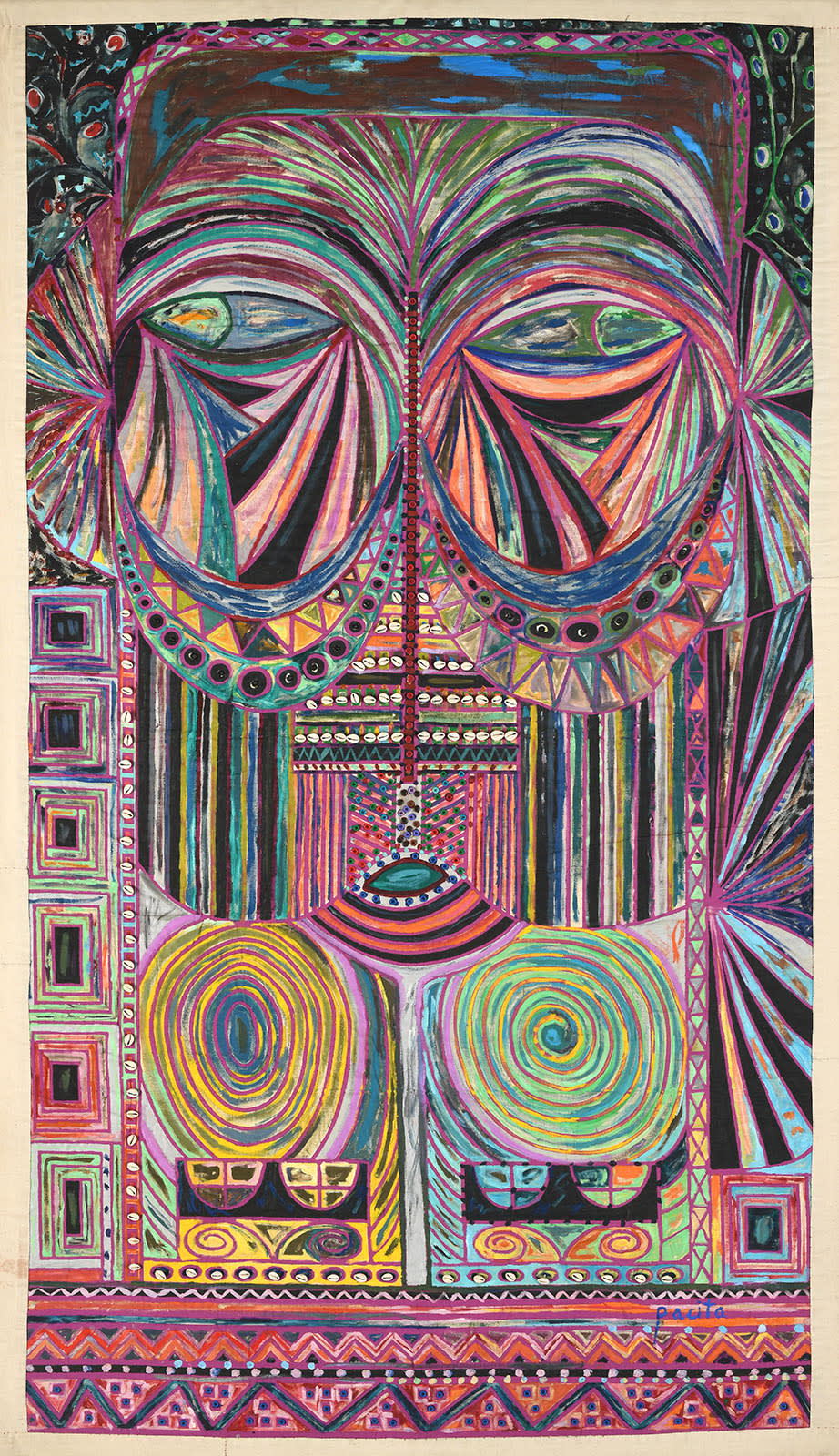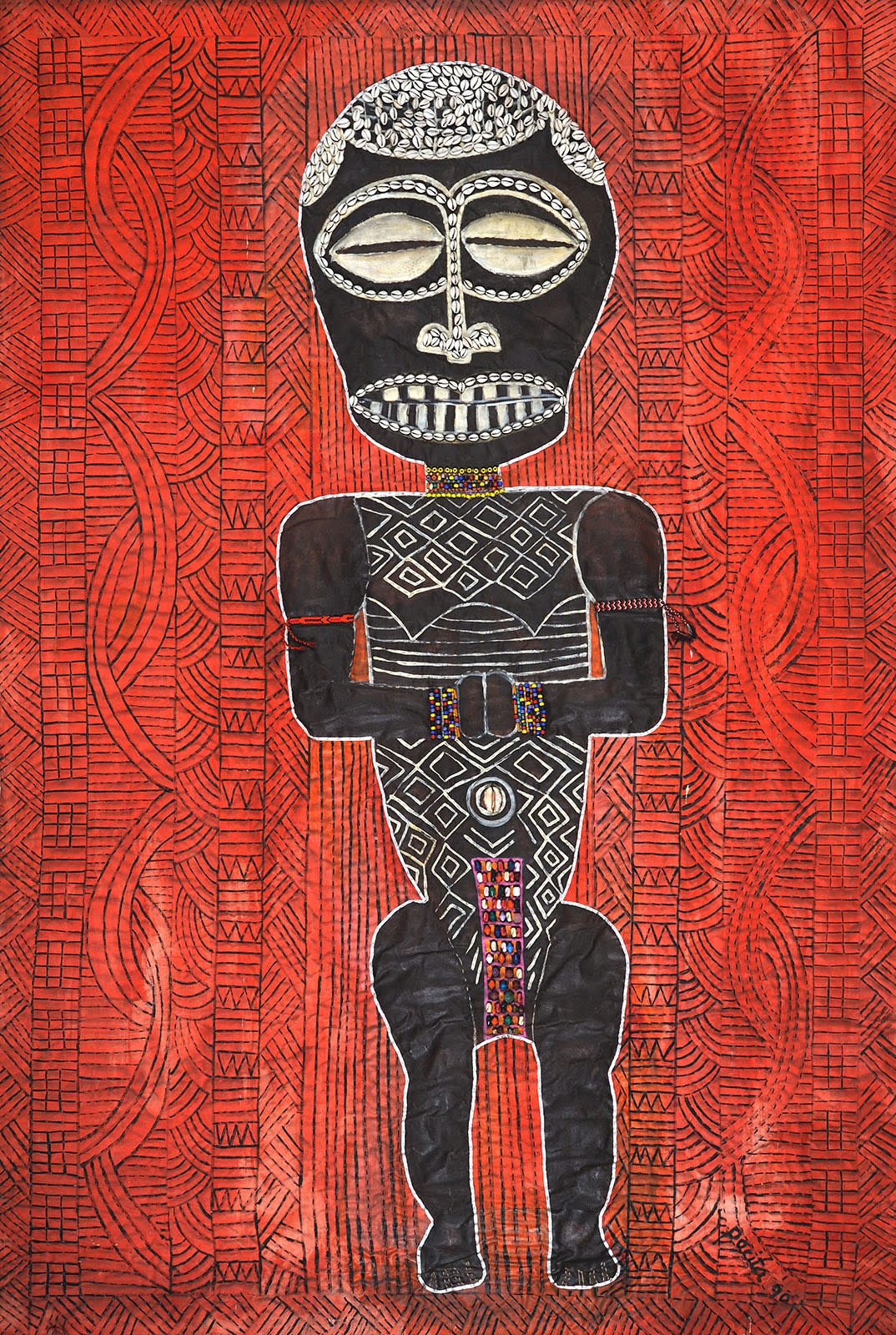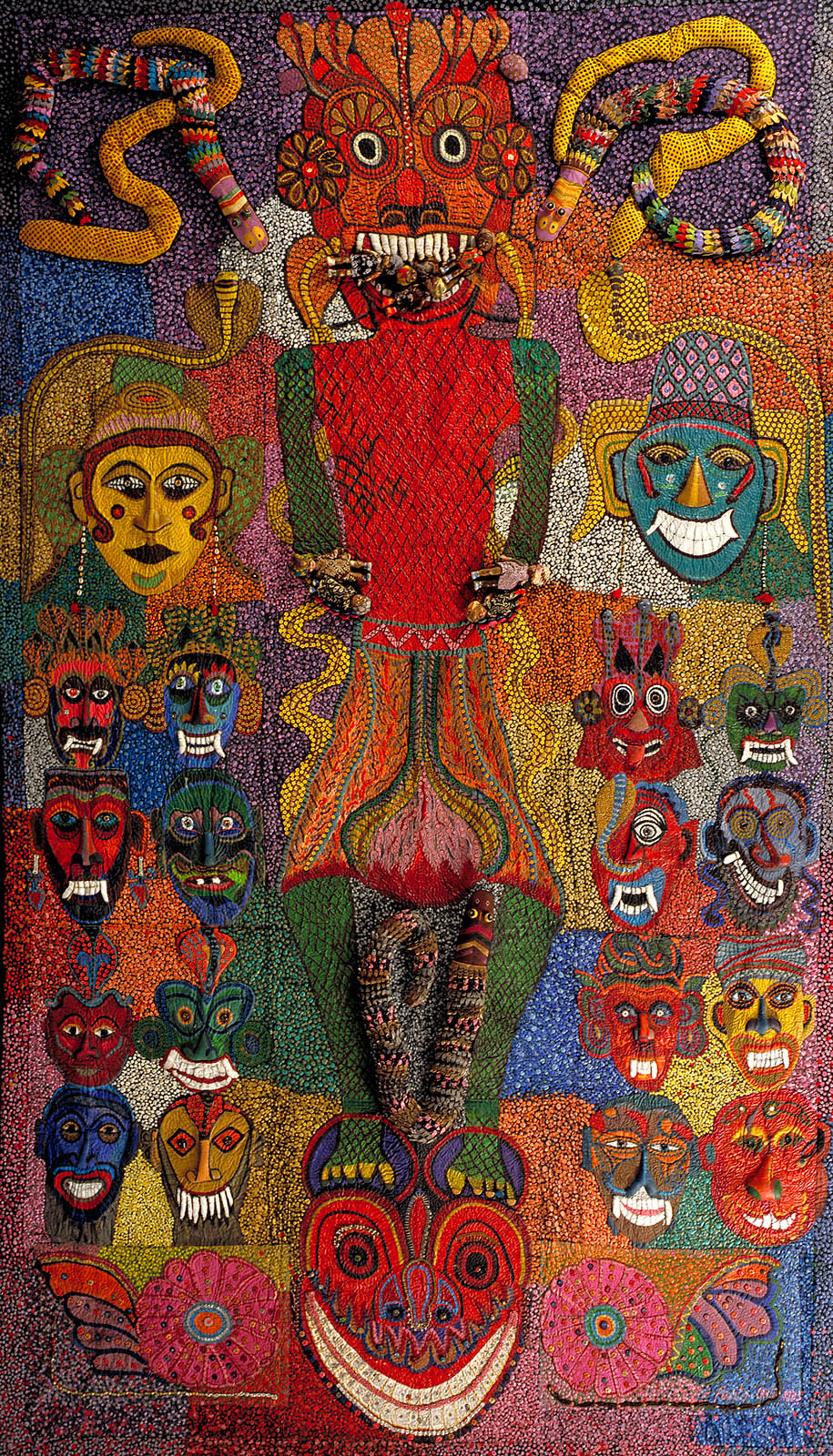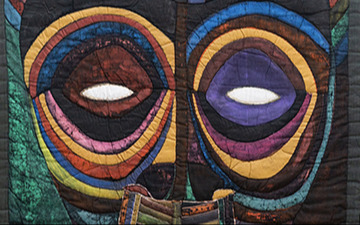
11th Berlin Biennale
Pacita Abad
Gropius Bau, Berlin
About
Although trapunto is an Italian quilting technique that predates the fourteenth century, contemporary artist Pacita Abad inverted this method of creating padded patterns on stitched cloth—lending it a sculptural dimension and infusing it with imagery rooted in non-hegemonic cultures. Using a sewing technique historically gendered “female,” she created a large-scale, hand-sewn, and vibrantly painted series of masks (1981–2000), which incorporate multiple materials and influences ranging from African masks to Nepalese and Tibetan thangkas, depictions of buddhas or deities painted on cloth.
As a Filipina and self-defined woman of color, Abad intensively researched the diverse epistemologies of the Global South throughout her career. Leaving the Philippines after being involved in protests against the dictatorship of Ferdinand Marcos (1965–86), she moved to the United States. As an art student in New York, she became aware of the considerable influence that so-called “primitive” art had exerted on western modernism and of the art world’s bias against the Indigenous artists who produced these works that were often labeled as “decorative” or “ethnographic.” Through her own work and extensive travels and study in Latin America, North America, Asia, and Africa, she became a joyful and persistent advocate for the geopolitical empowerment and artistic recognition of traditional cultures.
The selection of trapunto mask paintings on view includes the largest of the series: Marcos and His Cronies (1985–95), also known as Medicine Man, which took ten years to complete. It represents the brutality and corruption of her country’s government under the Marcos regime. The dictator appears surrounded by eighteen grotesque masks that represent various members of his cabinet as well as his wife Imelda, whose bright earrings refer to her notoriously lavish lifestyle.
Words by Agustín Pérez Rubio (from the 11th Berlin Biennale website)
Curators: María Berríos, Renata Cervetto, Lisette Lagnado, and Agustín Pérez Rubio
Born in Batanes, Philippines in 1946, Pacita Abad was the daughter of a congressman, who had hoped that she would traverse a similar political path. But the course of Abad’s life changed after a year of travelling in 1973 to Iran, Afghanistan, Pakistan, India, Sri Lanka, Myanmar, Thailand, Laos, Taiwan and Hong Kong. She decided to take up painting. Abad later married a developmental economist, Jack Garrity, whose work predisposed them to travel to developing countries. Her experiences in each place informed her subject matter from the beginning; traditional art practices like ink-brush painting in Korea, paint brushing on silk in the Dominican Republic, batik painting in Indonesia, tie-dye in Africa, macramé in Papua New Guinea, were techniques she introduced either singly or several in one art work. In the late seventies and early eighties Abad introduced a quilting method, trapunto, onto her canvasses, which were then layered with objects on top of her quilted material: stones, sequins, glass, buttons, shells, mirrors, printed textile. She referred to this technique, and the process of layering, stuffing, stitching and the collaging of objects on painted canvas, as trapunto painting.
Characterised by vibrant colour and accumulated material, these large scale trapunto paintings traverse a diversity of subject matter: from tribal masks and social realist tableaus depicting the individuals and communities that Abad encountered throughout her travels, to lush and intricately constructed underwater compositions and abstractions. She lived and travelled in a bewildering amount of countries – from Bangladesh to Sudan, Sudan to Jakarta, Jakarta to Boston, Washington D.C. to Manila – and it is this itineracy that has defined and shaped her subject matter. Pacita Abad’s work brought together images and experiences across cultures, economies and histories and offered reflections on the global long before the discourses of globalisation and transnationalism were felt in the art world.
Her work has been featured in solo exhibitions at the National Museum , Jakarta, Indonesia; Hong Kong Arts Centre, Hong Kong, The Museum of Philippine Art, Manila; Cultural Center of the Philippines, Manila; Bhirasri Museum of Modern Art, Bangkok, Thailand; Singapore Tyler Print Institute, Singapore; The National Museum for Women in the Arts, Washington, D.C.; and the National Center of Afro-American Artists, Boston, among others. She has participated in numerous group exhibitions, including: Beyond the Border: Art by Recent Immigrant, Bronx Museum of the Arts, New York; Asia/ America: Identities in Contemporary Asian American Art, a traveling exhibition organized by the Asia Society, New York; Olympiad of Art, National Museum of Modern Art, Seoul, Korea; 2nd Asian Art Show, Fukuoka Art Museum, Fukuoka, Japan and La Bienal de Habana, Havana, Cuba. She died in Singapore in 2004.
Installation Views
Works
